
Do you think your school could be converting more leads into students? Does your admissions team struggle to give each prospect the personalized attention they need? Could you better use CRM and marketing automation to scale and manage your work?
Whether through inexperience, outdated work processes, or just a simple lack of time, many schools struggle to make their admissions funnel as efficient as possible. If this is the case for your team, conducting a forensic review of your strategies and processes could be worthwhile.
A pondering question is: What is a student recruitment funnel? By carefully evaluating the people, processes, and software involved in managing your funnel, you can identify actionable strategies to make life easier for your team and maximize your conversion rates. Here’s how to do it in six simple steps.

1. Analyze Your Admissions Funnel Data
The first step towards improving your admissions process is understanding where the problem lies. Do you need to nurture more prospects from inquiry to application? Do you need more applicants to become students? Are you generating enough leads across different channels to reach your targets in the first place?
Analyzing the existing data in your school’s admissions funnel will help you understand where you are versus where you need to be to reach your targets. Simply map your funnel out to see how many inquiries, applications, and enrollments you are generating and your conversion rate for each stage.
Example: This funnel shows a school that generates 3,000 leads a year, converting 900 of those (30%) into applicants. 30% of applicants then convert into students. This means the school has a 9% conversion rate of total leads to enrolled students.

If needed, you can go beyond the basic stages of inquiry, application, and enrollment and include other stages unique to your admissions cycle, such as attending an interview or obtaining a visa. You can also create funnels for separate lead segments or programs to understand better how your success rates break down.
Looking at this data, you may be able to see clearly at what stage of the admissions cycle you are falling short. In the above example, you could argue that a 30% conversion rate of leads to applicants is relatively healthy, but perhaps more applicants should be progressing to enrollment. The school could, therefore, improve its overall conversion rates by working harder to convince applicants to enroll.
Of course, it isn’t always that simple. If your application conversion rate isn’t what you hoped, it might be that your team is not doing enough to qualify leads before they apply properly. Similarly, if your conversion rate of leads to applicants is low, the problem may be that you are not generating good quality leads in the first place, and you may need to review your lead generation strategies. This is where a more detailed evaluation of your process is necessary.
Below are three images explaining the awareness (TOFU), consideration (MOFU), and decision (BOFU) stages, these stages are crucial to the student recruitment funnel:
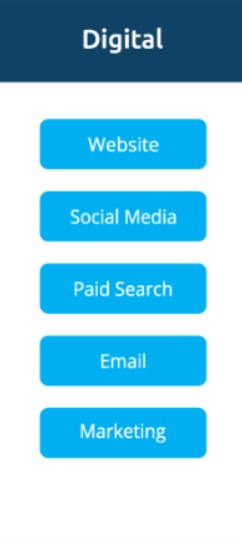
TOFU stage
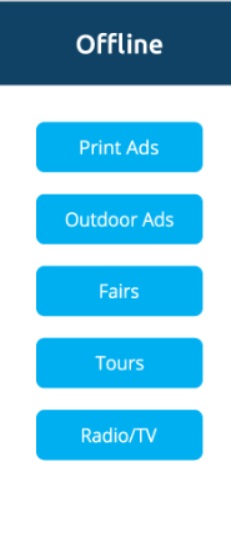
MOFU stage
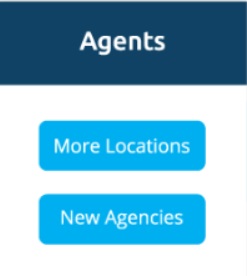
BOFU stage
SEMRush explains the three stages as the buyer’s journey from the first point of contact into the conversion.
2. Review Your Admissions Team’s Structure and Daily Workload
If you’re finding admissions challenging, it may have something to do with the overall setup of your team. Perhaps you are understaffed, or your team doesn’t divide its responsibilities efficiently, or you don’t have a clear sense of who is responsible for what.
Try to quickly detail the overall structure of your team, including:
– The number of admissions reps or others handling leads in your team and their responsibilities.
– Any additional support staff you have (administrators, assistants, tech support, etc.), and their responsibilities.
– The managerial hierarchy: who reports to whom, how the team might be divided into smaller sub-teams (if relevant), etc.
This might seem self-explanatory, but it can be a handy exercise to give your team clarity on precisely what its resources are and whether those resources are organized to handle your overall workload efficiently.
Next, ask yourselves a series of questions about the overall workload in your team, such as:
- Do you have enough admissions reps for the number of leads you generate?
- How is the management of leads divided amongst your team (e.g. by territory, course etc.)?
- Are new leads assigned manually, or is the process automated through your CRM?
- Do some admissions reps get assigned more leads than others? If so, why?
- How much time do your reps spend on other tasks besides directly following up with leads (admin, internal meetings, handling queries from current students or faculty, etc.)?
The answers could point to some severe organizational flaws holding your team back. You may find, for instance, that manually assigning prospects slows down your progress and results in slower follow-up times.
Or you could find that the way you currently segment prospects to different lead owners results in certain members of your team receiving too many contacts to handle while others have the bandwidth to take much more.
Or you might realize that you are short-staffed and need to hire more admissions reps or support personnel to free up your current team members.
Whatever the case is, this is an important first step in understanding what kind of resources you have to improve your admissions process.
3. Perfect Your School’s Lead Scoring System
Lead scoring is one way to better manage your team’s workload. Available with many CRM and marketing automation platforms, lead scoring allows you to identify high-priority prospects so that your team can work on connecting with those most likely to become students at your school.
If you are already using lead scoring in your admissions process, take the time to review your system and ensure your scoring criteria are an accurate reflection of your lead profiles. You should also pay attention to how your staff are using the system. It might be that they don’t pay enough attention to a prospect’s lead score when following up, meaning they are not identifying high-priority leads for more persistent contact. Alternatively, they may rely on it too much and only try to connect personally with prospects that have obtained high scores.
If you don’t have a lead scoring system, you can create one relatively easily. Typically, lead scoring is based on two main factors – fit and interest. To score leads based on fit, you assign scores based on their characteristics (age, location, qualifications, etc.) and how well they match your target personas.
Scoring based on interest, or behavioural lead scoring, involves assigning points to leads based on their engagement with your marketing and admissions efforts. Depending on your CRM and marketing automation system, you may be able to assign points to contacts based on their response to contact attempts, attendance of events, and any interactions they have with your school online, such as viewing a web page or clicking a link.
Consider what actions or attributes indicate that a lead will become a student at your school in these two categories, and create a framework to assign scores.
Example: A lead scoring framework for a business school. Here, the admissions team is assigning points based on location, professional and academic credentials, associations, and online engagement. This combination will give them a good balance of fit and interest to ensure accurate scores.
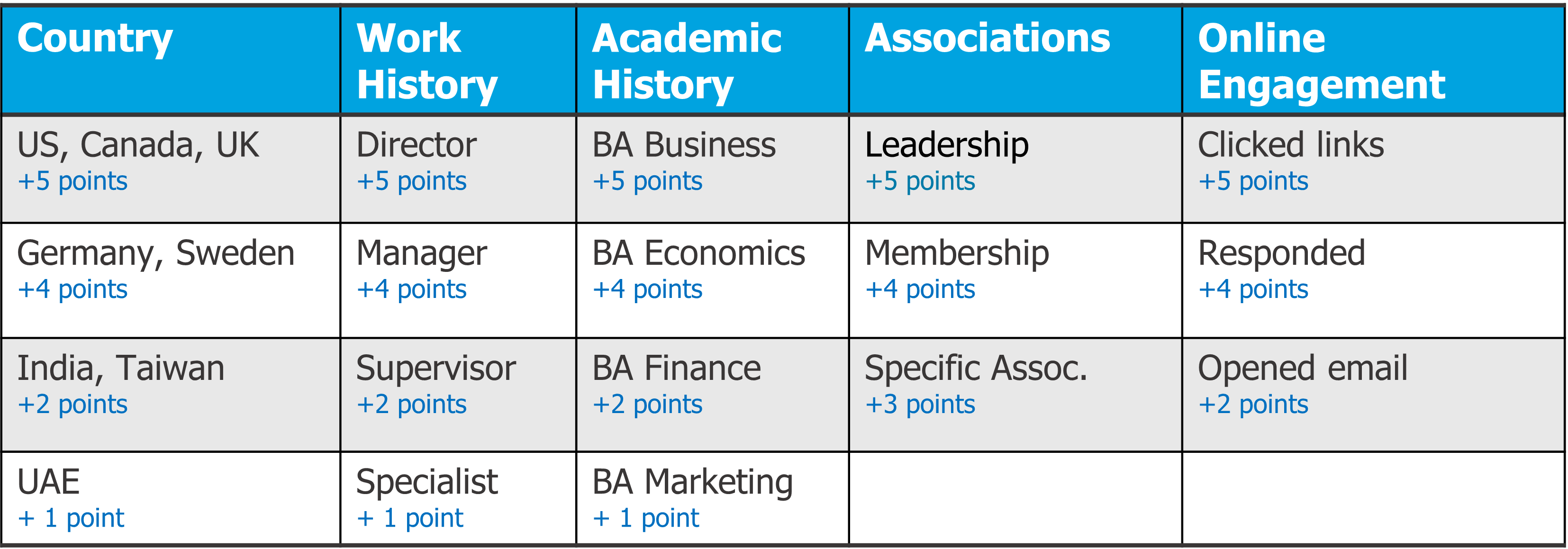
Not only can lead scoring help your team manage its workload better, but it can also improve your success rates by helping you refine the tone, messaging, and frequency of your follow-up.
For instance, if you can see that a prospect has a low score, it may not be a good idea to call them persistently and attempt to push them towards applying right away. Instead, it might be better to send a quick email encouraging them to sign up for an event or check out a blog on your site so they can explore your school further. A high-scoring lead, on the other hand, may appreciate it if you make every effort to connect with them directly.
4. Look at What Your School’s Competitors are Doing
No matter what you do to nurture leads through your admissions funnel, your competitors can undo your school.
Prospects researching schools and programs will likely look at multiple options. And if one particular school is more diligent in following up and engaging with them, that will most likely be their chosen school.
With that in mind, always having one eye on your competitors’ processes is important. Look at how they capture leads on their website, what personal contact they offer, what events they are running, and anything else they might be doing to attract students that you can learn from.
You can even ‘mystery shop’ their follow-up process by having someone submit an inquiry and see what kind of follow-up they receive. This will give you a good sense of what resources you may need to devote to your process to show your school an edge.
5. Evaluate the Components of Your School’s Lead Nurturing Process
At this point, you can get into the nitty gritty of analyzing the components that make up your admissions processes. This can involve everything from automated and manual workflows to email and SMS content to physical events that prospects attend.
Workflows
You should review the structure of any workflows related to your school’s admissions strategies. This might include email drip campaigns, workflows to assign leads or manual tasks, event promotion cycles, or anything else you use to dictate when contact is made with your leads.
During this process, look for any flaws in your workflow branch logic that might be causing you to lose leads. You might find that simple errors are causing people to be sent the same message twice, be sent an inappropriate message, or even drop out of the workflow altogether. These issues could have a big impact on your conversion success and can usually be fixed quickly.
You can also use data from your CRM and marketing automation system to gain insights into the success of workflows in driving leads down the funnel.
Example: HubSpot offers several reports to help you analyze workflow performance.

Armed with this information, you can strategize ways to improve your workflows. For example, you might decide that adding manual phone call attempts to specific points of an email drip campaign could enhance your chances of connecting with leads or that contacting them by SMS might be a better approach at a critical juncture. Creating more multichannel processes incorporating automated and manual communication will make your follow-up process more well-rounded.
Email, SMS, and Other Content
Another area in which CRM and marketing automation reporting can be invaluable is in measuring the effectiveness of your email and SMS follow-up content. You can analyze open rates, read rates, click rates, replies, and unsubscribes to pinpoint where and why content may be underperforming.
Example: Performance metrics from an email campaign in Mautic by HEM.

These metrics can be instructive. If your email open rate is low, it might mean you need to tweak your subject lines. If your read rates need to be improved, try changing your copy’s format, tone, or length. If too few leads click through on your emails or messages, try serving them with different CTAs and offers to find something more appealing. Whatever the problem, you can always employ other tactics and techniques to fix it.
When reviewing your emails and messages, don’t forget to evaluate any collateral content that it might direct prospects toward, such as linked blogs, landing pages, or brochures. These offers are often the final stepping stone towards conversion in your campaigns and need to be as engaging and persuasive as possible.
Events
For most schools, meetings, campus tours, information sessions and other events are crucial conversion touchpoints. They offer prospects a dedicated space to learn about your school in more depth, have their questions answered, and connect directly with your staff.
Think about what events you offer and where they fit in your admissions funnel. What do you offer prospects at different stages in their journey? How do those events tend to impact their decision-making process? What does your team do to follow up with attendees, both before and after events? Figuring out how to make the most of these touchpoints could be crucial to your success.
It would be best to look at what you have in place to promote your events. Do you have an email workflow for event invites? Are you promoting them through social media, advertising, and your website? Ramping up your efforts in this regard could pay off significantly.
6. Map Out Your Ideal Admissions Follow-Up Process
Finally, now is the time to correctly map out precisely what your follow-up process should be. Too often, admissions teams can be too reactive in their follow-up activities, deciding when and how to contact leads.
Others tend to leave follow-up methods to individual admissions team members. This means there will be a huge variation in how leads are contacted. Some staff will follow up more frequently than others; some will send more emails, others prefer phone calls, some will use automated communications and templates, whereas others personalize their contact efforts.
While, to a certain extent, you may want to allow reps the freedom to use the tactics that they are most comfortable with and that work best for them, there needs to be a certain amount of direction in place.
Using the insights you have gleaned from going through the five steps above, try to define a framework for follow-up that includes a range of communication channels and factors in both manual contact attempts and any automated communications you may send out.
Example: A follow-up workflow for a high-priority lead. Note how this school utilizes a range of communication channels and that the frequency of follow-up attempts decreases if the lead is not responding.
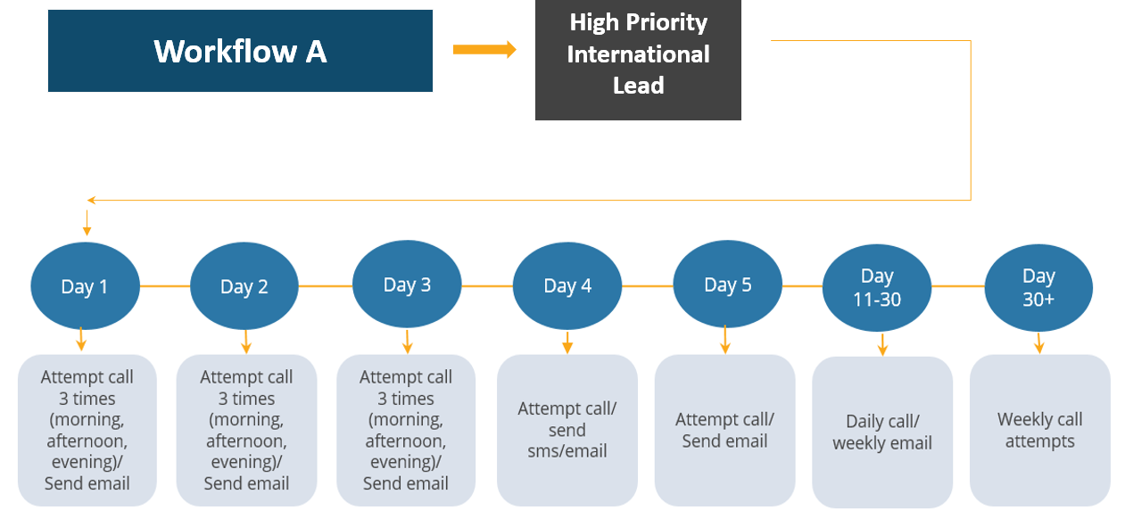
This example is quite aggressive, but you can adapt your process to match your resources. You’ll also notice that this workflow only applies to this school’s ‘high priority’ leads. You can create different workflows for different prospects depending on their lead score, stage in the funnel, or how well they fit your target audience.
This will allow your team to use its time wisely, working harder to contact high-value leads while devoting less time to those who are unlikely to enroll. Whatever your resources, goals, and tools, you can make your admissions process as efficient and effective as possible.







